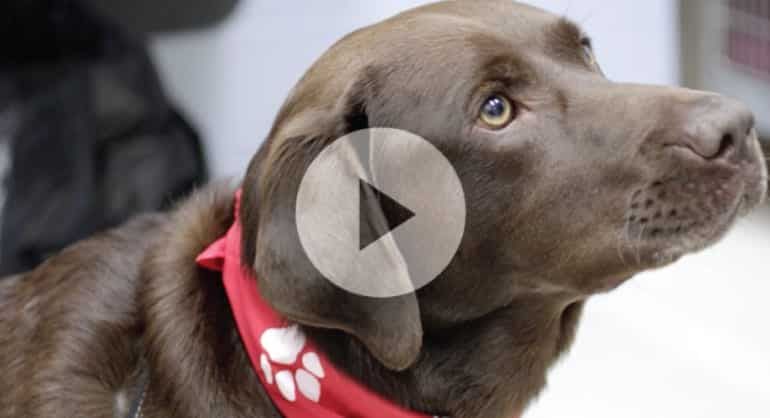What is dog whistling?
Dog whistling refers to the use of coded or suggestive language to convey a particular message to a targeted group of people while avoiding backlash from others. The analogy is that dog whistles produce sounds at frequencies that can be heard by dogs but are outside the range of human hearing.
Some common examples of dog whistles include:
- “States’ rights” as a justification for policies that disadvantage minorities
- “Inner city” as a euphemism for poor, black urban areas
- “Welfare queens” invoking stereotypes of black women abusing public aid
- “Illegal aliens” rather than “undocumented immigrants” which dehumanizes migrants

People use dog whistles on dogs for a few key reasons:
- To communicate commands or instructions that only intended dogs should follow
- To get a dog’s attention from a distance where a normal voice would be ineffective
- To relay directions to working dogs such as hunting, herding, or obedience training
Dog whistles allow directing dogs discretely without distracting or alarming other dogs or people nearby. However, inappropriate use of whistles can confuse or distress dogs.
How dog whistles work
Dog whistles produce sounds at high frequencies that are beyond the range of human hearing but audible to dogs. While humans can generally hear sounds up to 20,000 Hz, dogs can hear pitches between 45,000-65,000 Hz depending on the breed. Dog whistles take advantage of this wider hearing range in canines.
Most dog whistles operate at frequencies between 23,000-54,000 Hz to produce sounds that grab a dog’s attention. The whistle allows owners to give commands and signals that are inaudible to people. Using frequencies only dogs can hear prevents accidentally startling people nearby while maintaining control over a dog’s behavior.
The mechanism within the whistle uses a small pea or noisemaker that resonates at high frequencies when blown into. Adjustable whistles allow tuning the pitch higher or lower to find the optimal frequency for an individual dog. Knowing your dog’s comfortable hearing range helps choose an appropriate whistle.
Signs your dog is hearing a whistle
When dogs hear high-pitched whistles that are out of human hearing range, they may show some telltale signs and behaviors. According to Wagwalking.com, some signs that your dog can hear the whistle include:
- Alert
- Head Tilting
- Raise Ears
- Stiff Tail
Specifically, you may notice your dog perking up their ears and tilting their head side to side as they try to pinpoint where the sound is coming from. They will appear alert and may start looking around for the source of the high-pitched sound they detect (https://wagwalking.com/sense/can-dogs-hear-whistles).

These signs can be subtle, so pay close attention to your dog’s body language and behavior, especially if they seem focused, confused, or upset without obvious reason. If your dog is suddenly exhibiting strange behavior when outdoors, it may signify they hear a whistle that you can’t detect.
Checking your dog’s hearing
If you suspect your dog may be reacting to a high-frequency dog whistle that you can’t hear, it’s important to test their hearing range. Vets can conduct several hearing tests to check a dog’s hearing sensitivity across different frequencies.
One common test is the brainstem auditory evoked response (BAER) test. This non-invasive test uses electrodes placed around the dog’s head to measure electrical activity in the auditory pathways when sounds are played. It can detect hearing loss and determine the frequencies a dog can and cannot hear (Source).
Vets may also use a handheld medical device called an otoscope to look inside the dog’s ear canal for any signs of infection or obstruction that could be impacting their hearing. Examining the ear drum can provide clues about hearing health.
At home, you can get a sense of your dog’s hearing range without specialized equipment. Make noise at different frequencies and volumes, starting very faint and increasing – does your dog react? Can they hear high-pitched sounds? Try clicking keys together, whistling, or ringing a bell. Gauge their reactions to determine their hearing sensitivity (Source). While not as accurate as a vet exam, at-home tests can identify major hearing issues.
Finding hidden whistles
It can be difficult to find hidden dog whistles that emit high-frequency sounds that humans can’t hear. Here are some tips for detecting concealed whistles in your environment:
Conduct a thorough visual search of the area. Look for any small plastic devices that could be hidden dog whistles. Inspect areas out of your dog’s reach where a whistle may be concealed like on top of cabinets or bookshelves.
Use a frequency detector app on your smartphone that can identify sounds up to 24 kHz, which covers the range of most dog whistles (https://www.quora.com/How-can-I-detect-if-a-dog-whistle-is-being-used-on-my-dog-covertly). Sweep the phone around the room and listen through headphones to pick up any high-pitched sounds.
Specialized high-frequency recorders and microphones can also detect ultrasonic whistles imperceptible to humans. Some models allow you to visualize the recorded sounds and identify any spike patterns indicating a dog whistle. These tools can help capture evidence if you suspect foul play.
Pay attention to your dog’s body language and reactions throughout your environment. If your dog is frequently stressed or reacting to something undetectable in a certain area, this may indicate a hidden whistle. Your dog’s behavior can guide you to its source.
Consider setting up surveillance cameras to monitor areas that arouse your suspicions. Look for any unusual interactions when you are not present that may involve covert whistling.
With diligence and the right tools, it is possible to detect concealed dog whistles. But the most important clues will come from changes in your dog’s behavior and any signs they are responding to silent high-pitched sounds in their environment.
Confronting whistle users
If you suspect someone is using a dog whistle on your dog, the first step is to speak with them directly. Approach the situation politely and explain your concerns. Signs someone may be using a dog whistle include your dog reacting to high-pitched sounds undetectable by humans, barking at nothing, howling unexpectedly, or getting agitated when near a certain person or location according to this source.
When confronting a suspected whistle user, remain calm and friendly. Ask them if they have been using any devices that emit high-frequency sounds. They may not realize the whistle is bothering your dog. Give them the benefit of the doubt initially, as they may not be aware of the impact. If the whistling continues after you’ve spoken to them, follow up and be more direct about the effect on your dog and the need to stop immediately.
If the person denies using a whistle despite evidence, be clear that the sounds must cease whether from a whistle or other device. Threatening police involvement or legal action should only be used as a last resort if absolutely needed according to ethics of whistle use. Focus first on resolving the issue calmly through direct communication and mutual understanding.
Blocking Dog Whistles
There are a few methods that can help block or limit your dog’s exposure to annoying or harmful dog whistles from neighbors or strangers. One option is to use whistle-blocking devices that emit frequencies to jam or cancel out dog whistle sounds. According to one Reddit user, specialized apps or smart speakers may be able to play an ‘anti-noise’ sound that makes dog whistles inaudible.

Another approach is training your dog to ignore or be less reactive to whistles. With patience and positive reinforcement, you can teach your dog commands like ‘hush’ or ‘quiet’ when they hear a whistle, so they learn not to bark or get agitated. Desensitization exercises can also help a dog stay calm and distracted with toys or treats, instead of focusing on the whistle sound. However, blocking the sound entirely may be more effective than training alone.
Whistle Laws and Regulations
Local municipalities may have specific laws regarding the use of dog whistles. These laws aim to protect animal welfare and public nuisance concerns. Some places ban the use of dog whistles altogether, while others restrict when and where they can be used. It’s important to check your local regulations.
For example, Los Angeles County prohibits the use of whistles, ultrasonic devices or other electronic devices specifically designed to frighten or harm dogs.[1] New York City similarly bans the use of such devices in public parks. Other cities may have noise ordinances restricting high frequency sounds that could apply to dog whistles.
If you suspect someone is using a dog whistle to harass or harm your pet, first try speaking to the person directly. Politely explain the effects it has on your dog. If the behavior persists, document incidents and report it to your local animal control agency or police department. Provide details like location, date and time. This creates a record that animal protection agencies can reference if legal intervention becomes necessary.
You can also report excessive dog whistle use to neighborhood associations or community boards. They may be able to implement local guidelines or put up signage reminding residents to be considerate. Working cooperatively with your community helps create an environment where all pets can thrive.
Ethical Use of Whistles
Using a dog whistle ethically involves promoting responsible whistle use. It’s important to keep in mind that whistles should only be used as positive training tools and not as punishment devices. Whistles allow handlers to communicate with dogs at a frequency they can hear better than human speech, but they must be introduced properly through positive reinforcement training.
Appropriate uses of dog whistles include recall training, giving commands at a distance, and reinforcing learned behaviors. However, whistles should never be used excessively or to intentionally startle or frighten dogs. It’s best to use a whistle as one component of a larger training program based on positive reinforcement. This encourages a willing partnership between handler and dog.
Following animal welfare guidelines, dogs should be introduced to whistles gradually at a reasonable volume. Pay attention to your dog’s comfort level and don’t overdo whistle training in a single session. Always combine the whistle with a reward like praise, play, or treats so your dog associates it with something pleasant.
With a thoughtful training approach, whistles allow handlers to tap into their dog’s natural ability to hear ultrasonic frequencies. This expands communication possibilities between humans and canines. However, it’s important that whistles are used ethically, as helpful training tools rather than punitive devices.
Caring for dogs affected by whistles
Dogs that have been excessively exposed to whistles can become anxious and fearful of the sound. If your dog cowers, pants heavily, paces, or tries to escape when it hears a whistle, it likely has developed a phobia.
To help relieve your dog’s anxiety, create a calm environment free of whistles and other triggering sounds. Consider using anxiety wraps, pheromone diffusers, or calming supplements to reduce stress. Work on basic obedience training using positive reinforcement to rebuild confidence.

You’ll also need to re-train your dog to develop neutral associations with whistles. Start by exposing your dog to whistle sounds at a low, barely audible volume. Pair the whistle with high-value treats and praise. Very slowly over multiple sessions, increase the volume while continuing positive reinforcement. The goal is for your dog to learn that whistles predict good things, not fear.
Be patient and seek help from a certified dog trainer or behaviorist if needed. With time and positive counterconditioning, dogs can overcome whistle-related anxiety and phobias.